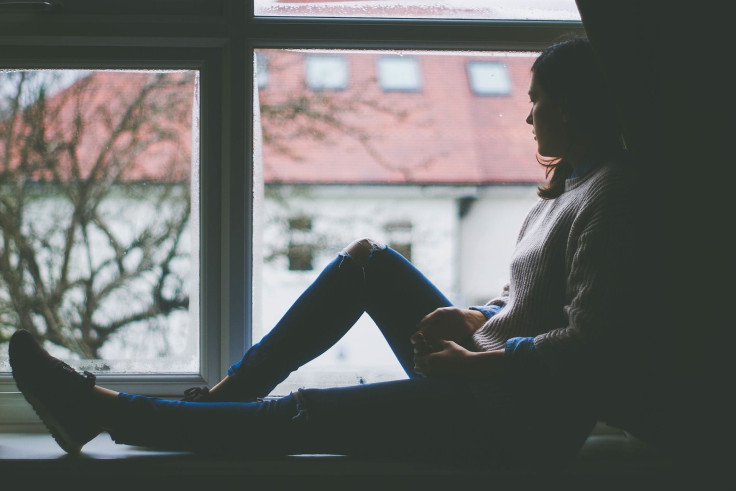Women And Young People Under Age 35 Are Most Vulnerable To Anxiety Disorders: Study

Anxiety is an incredibly common mental health disorder in the Western world, yet we often brush it off as something that is within an individual’s control. Anxiety sufferers are likely used to hearing comments like “stop worrying so much,” “just calm down,” or “quit being so negative,” even though halting those anxious thoughts is easier said than done.
Researchers at the University of Cambridge hope to raise awareness of the disorder with a new study published in the journal Brain and Behavior. The study, which analyzed nearly 50 systematic reviews on which groups of people are most vulnerable to anxiety disorders, found that women and young people in particular were at greatest risk of developing anxiety.
Led by Olivia Remes, a Ph.D. student at the University of Cambridge who’s studying mental health disorders, the researchers focused on the prevalence of anxiety disorders between 1990 and 2010, and found that it stayed around the same — every four out of 100 people had anxiety — during those two decades.
When it comes to women having a higher risk of developing anxiety, more research will be needed to understand the specific mechanisms that play a role in the trend. It’s possible that women tend to accept mental health issues and seek help more often than men, and thus have a higher diagnostic rate, but scientists also hypothesize that there may be emotional or hormonal undercurrents as well. According to the Anxiety and Depression Association of America (ADAA), women are twice as likely to have an anxiety disorder as men.
“We don’t really know for sure why women and young people are most affected, but it could be that women are more impacted than men because of brain chemistry and hormonal fluctuations,” Remes told Medical Daily. “Women have had the more traditional role of caring for the young, so evolutionarily speaking, they may be more prone to worrying. And when they’re exposed to stress, they’re more likely to develop anxiety.”
The fact that anxiety affects women more than men is not new; and it also tends to be a controversial topic in the psychology world. The question remains: Are women biologically wired to worry, or does society breed mechanisms of worry and nervousness in females from a young age? It’s possible, for example, that young girls are raised to associate problems with emotions, while boys are told to suck it up and deal with it in a more “manly” fashion. The researchers also found that pregnant women were more likely to develop obsessive-compulsive disorder (OCD).
“Women are more likely to use emotion-focused coping strategies,” Remes said. “They tend to think and ruminate more about what happened, and this increases anxiety. Men tend to cope by problem-solving.” As for young people, Remes notes that researchers still don't quite know why anxiety may manifest itself more than in older individuals, but fast-paced modern lifestyles and even excessive use of social media may play a role.
Groups that had a higher risk of developing an anxiety disorder included not only women and young people under the age of 35, but also anyone living in Western countries or North America. According to their findings, the rate at which people suffer from anxiety is much higher in North America than it is in general across the world, with eight out of every 100 people affected in North America. East Asia has the lowest anxiety rate, with only three in 100 people having anxiety, based on the current measuring tools.
“We don’t have enough research to know what’s driving these rates, but I think it would be interesting if we found out about cultural differences,” Remes said. “There’s significantly fewer studies in the developing world, so we know less [about mental illness in that area].” She also notes that another factor might be the differences in how anxiety manifests within various cultures. Social anxiety in the U.S. might mean a fear of standing up and speaking in front of a large group of people, while in Asia, the same term may refer to harboring shame or embarrassment in front of family.
Remes believes that furthering research on these topics could only improve awareness of mental health conditions around the world, and allow people — whether they’re a pregnant female, a young person, or an older male — to recognize their own symptoms of anxiety, or perhaps even prevent them.
“Preventing it before it starts is key, because once it starts it’s pretty hard to have a successful, lasting recovery,” Remes said. “A lot of people who get treatment relapse.” She adds, however, that there are some steps anyone can take — no matter whether you’re a female, male, young or old, or where in the world you live — that could keep anxiety at bay. Those include consistent physical activity, solid sleep every night, and some form of meditation. Cognitive behavioral therapy as well as antidepressants and other anxiety medications have also been shown to benefit anxiety sufferers.
Putting mind over matter could pay off too. Remes suggests that learning to replace ruminating thoughts with problem-solving ones could only help, and is made easier by lifestyle changes. Sometimes, taking action is the surest way to recovery. “[With] the constant worrying, I think it’s easier to do something rather than [ruminating],” she said. “Doing physical activity, leading a healthy lifestyle can help out with these things, instead of waiting around.”
Source: Remes O, Brayne C, van der Linde R, Lafortune L. A systematic review of reviews on the prevalence of anxiety disorders in adult populations. Brain and Behavior, 2016.



























